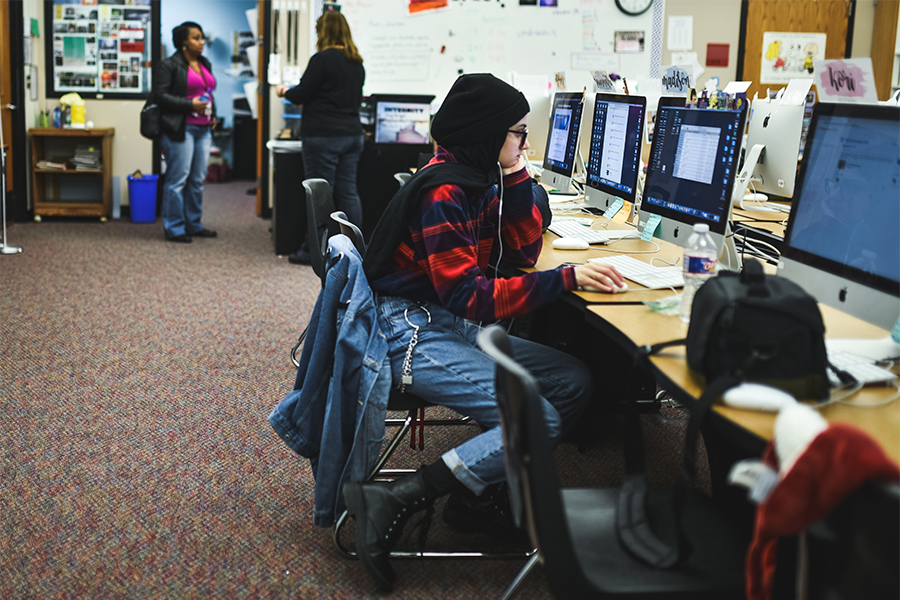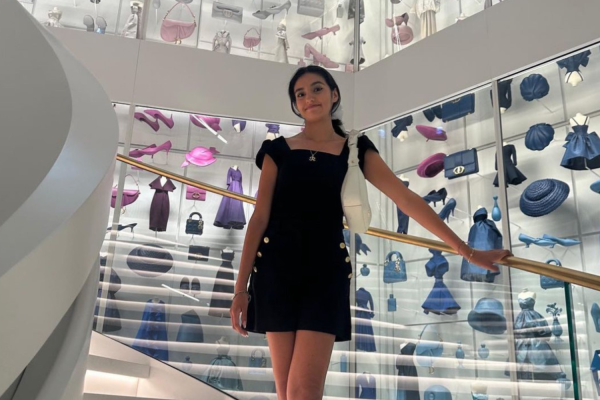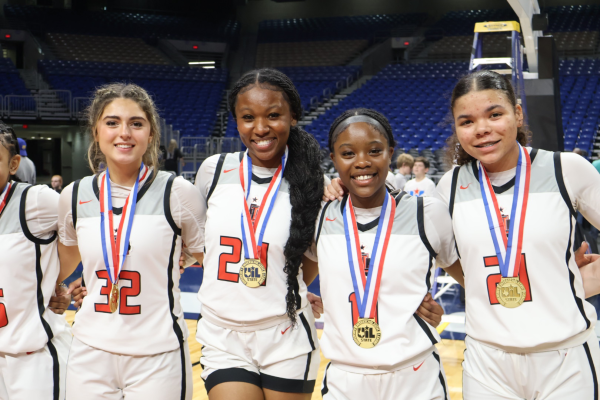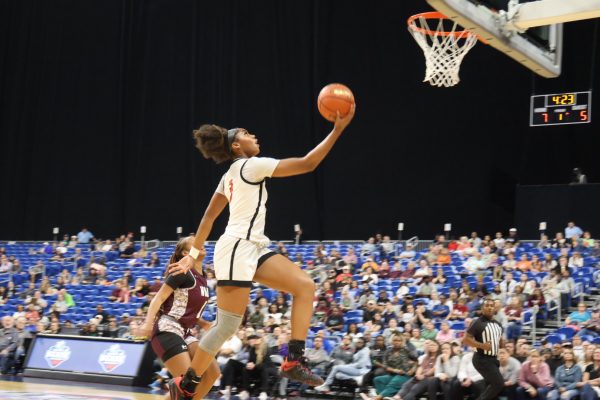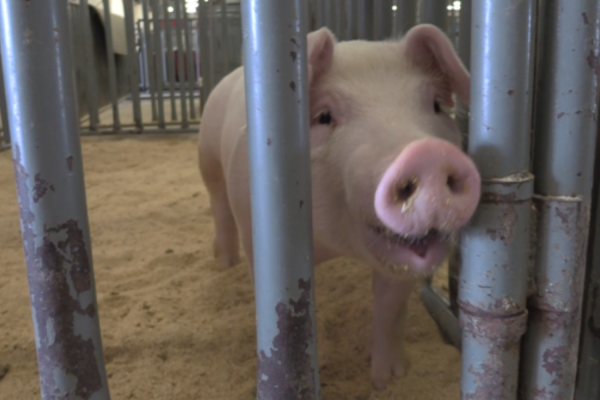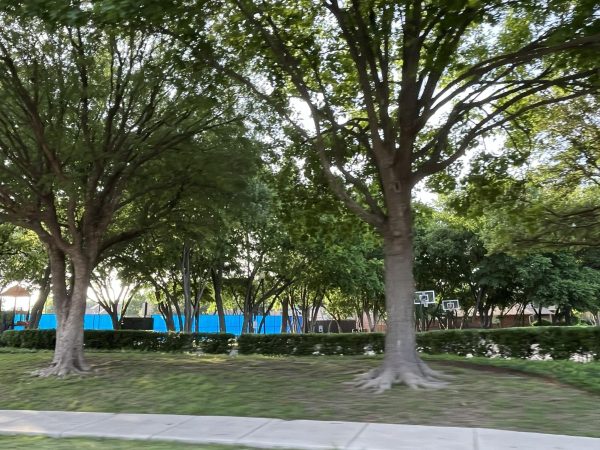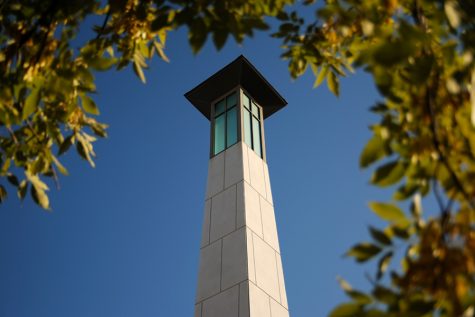More than clothing
The decision by some teen girls to wear a hijab
Dr. Martens on her feet, jeans, a long sleeve flannel, senior Aaya Hatahet incorporates current fashion trends with her religion of Islam by wearing a black hijab that coordinates with her shirt. (photo taken Feb. 2020)
Lacing up her Dr. Martens, cuffed jeans, and long-sleeve flannel, senior Ayah Hatahet is ready for the day.
She walks into school with her head held high, having pieced together a fashionable outfit. Another part of what she wears is more than a piece of clothing: her hijab.
Incorporating current fashion elements and coordinating color schemes while concurrently embracing her faith, Hatahet represents several girls on campus that are re-defining what it means to be both a teenager and Muslim in today’s world.
Honoring their religion on campus
Representing just 1.1 percent of the U.S. population as of 2017, 3.45 million people in America are a part of the Islamic faith that continues to grow as the country’s third largest religion.
Making their beliefs known, many Muslim students on campus wear a hijab in honor of their religion.
“It’s part of my religion and I felt that it expresses my values and it was a way to show we value modesty so that was a part of my religion and I felt like this was a way to show it,” junior Saara Ahmad said.
Anxious about her peers’ reaction to her wearing a hijab, 2020 graduate Hiba Abukhalaf let her faith steer her.
“I was scared of what people would think and, you know, I was very active playing multiple sports so of course, those were like worries in the back of my head but I knew that at the end, I needed to listen to what God told us to do,” Abukhalaf said. “That’s more important than anything in this life. So I wore it, and my parents were super encouraging.”
Despite this, the decision for these teens to wear a hijab is not one that is easily reversible.
“It wasn’t just a choice I would make and regret later and my mom talked to me about that,” sophomore Maylan Alotean said. “I can’t just put it on, take it off, because it is like representing me like getting closer with God and so if I were to take it off, it’s kind of disrespectful in a way.”
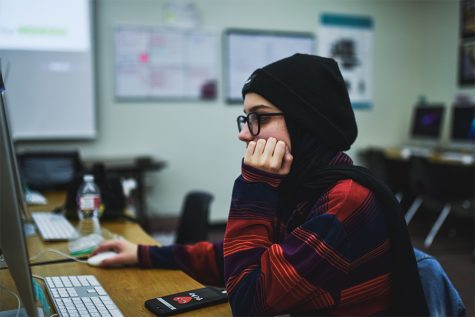
Alotean appreciates being able to positively represent her culture especially after hate crimes in the last 20 years.
“I like representing the Islamic community in a positive way because whenever I lived in McKinney, there was a lot of racism towards my mom,” Alotean said. “I kind of wanted to show people that it is, like, positive and we’re not like everyone thinks of us in the way the media portrays us.”
The harassment of Muslim students in American schools is not a new subject according to the former deputy assistant attorney general and head of the Civil Rights Division at the U.S. Department of Justice, Vanita Gupta.
“We see criminal threats against mosques; harassment in schools; and reports of violence targeting Muslim Americans, Sikhs, people of Arab or South-Asian descent and people perceived to be members of these groups,” Gupta said in a story by the New York Times in 2016.
For senior Ayah Hatahet, it began in middle school.
“I just ignore them,” Hatahet said. “A lot of people would like to touch my bun or harass me in a way. I didn’t really let it get to me. It was pretty bad how people perceived others. There were only two hijabis in my school and then the second year I was the only hijabi in that school. It was fun to feel like, I don’t feel different from people. I felt blended in. It was kind of tough.”
Although junior Isra Mohammed never faced any direct bullying, she felt shunned by her peers often.
“I’ve felt isolated and left out my entire life,” Mohammed said. “People have these unrealistic expectations on how I’m supposed to act because I wear it. I didn’t wear the hijab until halfway through sixth grade. But even still, there have been times of doubt and insecurity where I’ve wanted to take it off.”
However, Ahmad has faced nothing but respect since transferring to Frisco ISD.
“I was kind of scared because I have never been to public school before but I feel like everyone who I’ve met with and came across has been very welcoming,” Ahmad said. “They’re willing to see me not just because of what I wear but also like my beliefs, my personality, which I think is really important. People should judge you based on your personality, not on what you wear.”
Abukhalaf appreciates the person the hijab has helped her become.
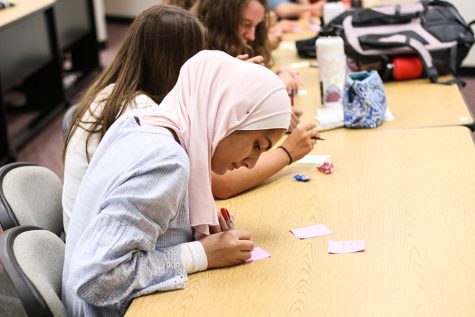
“When I walk around everybody knows I’m Muslim, there’s no hiding it,” Abukhalaf said. “With that comes a self reminder that I should always be trying to be the best version of myself. Don’t lie. Don’t steal, don’t cheat. It’s also a responsibility because, right now, Islam is not portrayed well in the media so I want to show people who aren’t educated about my religion that we’re not like the monsters that are shown in the media. It’s helped me become a better person because it’s just like a reminder to always be a kind person and just follow these Islamic values.”
Aligning clothing with beliefs
While teen trends on crop tops and beanies could seem to clash, these students have been able to make their style their own.
“It’s hard sometimes to match my clothing properly,” Mohammed said. “You have to match your outfits with your scarf and how you wear it. That’s why I own at least over 20 different ones [scarfs] in different materials and colors.”
But the topic of clothing is more difficult than it may seem as it is also important to make sure that they follow their faith in terms of appropriate fashion.
“When I started wearing my hijab, I had to change things to make sure they didn’t clash with my beliefs,” junior Hudaa Dadani said. “If I’m being honest, there are things that I cannot wear because of the hijab. I must say that it’s definitely worth the sacrifice though.”
Representation
With the U.S. representing a melting pot of origins and cultures, Mohammed believes her faith is a representation of diversity throughout the country.
“Wearing my hijab and practicing my faith reflects the beliefs, backgrounds, and morals of everyone in this country,” Mohammed said. “We have people from all different faiths and cultures with their own different practices and beliefs associated with it.”
For Dadani, wearing her hijab is not only a part of her identity, but it’s also about her community’s identity.
“When I wear my hijab, I proudly declare my identity as a Muslim among all the others around me as well,” Dadani said. “One of the upsides of being recognized as a Muslim is that other Muslims will greet me wherever I may be. This establishes a strong sense of community and reinforces the bond of faith that we share.”
However, being different isn’t always easy.
“There are times that I get really insecure,” Mohammed said. “Wearing my hijab is a reminder of what is truly important to me. It’s hard sometimes because I have to constantly be self-aware of my actions because I never want to give off a negative perception of hijabis or Muslims. So, I always have that dawning over me.”
Societal pressures, expectations, and misconceptions
Oftentimes, Muslim women have to face the pressure of others in society on the matter of whether to wear or not wear a hijab.
“Society pressures Muslim women in many ways,” Mohammed said. “I was pressured by a couple of older women I knew and some of my teachers too. When I started wearing the hijab, I was still pretty young but now I can definitely see how society pressures young Muslim women into wearing a hijab before they’re ready.”
But in Hatahet’s case, she felt that society pressured her to live her life without a hijab. She believes that the media has also earned its place as an incorrect source for information as the bias that was presented in such media outlets caused society to perceive her differently.
“The media was raging about how Islam and all Muslim people were bad people,” Hatahet said. “They would spread rumors. So, when I went to school, everyone would scream ‘Allahu Akbar’ and I used to get that ten times a day, every single day. I would think to myself, ‘do you even know what you’re saying?’”
Modeled from their mothers
Young girls are often influenced by what they see around them, and in their families, and for many of these students, the decision to wear a hijab is modeled from their mothers’ decision to do so.
I wear [the hijab] as a symbol of my faith and devotion but I actually really started wearing it because my mom wears it and I knew she wanted me to at some point,
— junior Isra Mohammed
“I always knew my mom wanted me to wear a hijab at some point, but she had never told me when I had to,” Mohammed said. “I wear it [the hijab] as a symbol of my faith and devotion but I actually really started wearing it because my mom wears it and I knew she wanted me to at some point. So, because of this, I had always planned on wearing it as well.”
Growing up around women who wore hijabs, Dadani saw it as a way to follow in their footsteps.
“I wouldn’t say there was any pressure from my parents,” Dadani said. “But, I did grow up seeing my mom, my sister, and even family friends wearing it so that just set a precedent for me to follow.”
For Alotean, she had the opportunity to truly understand the rules that come with wearing the hijab before she made the decision.
“My mom talked to me about it,” Alotean said. “I can’t just put it on and then take it off because it’s a representation of me getting closer with God. It would be disrespectful to take it off.”
Alotean’s mom, Dalal Alhihi had hoped to educate her and share values without simply thrusting her beliefs on to her daughter.
“I would not force it on her but I did want her to wear it,” Alhihi said. “When she was in eighth grade, she expressed to me how much she wanted to wear the hijab, but we lived in a very racist community so I did not allow her. Moving into Frisco again allowed me to gain reassurance that she will be fine even if she wore the hijab. I didn’t think anyone would react in a negative way. She is representing our faith in a positive way and is setting a good example for her younger sisters. I was very calm and collected when she chose to wear it even though I was bursting with happiness on the inside. I would be disappointed in her if she took it off, but after she started getting very serious with her hijab, I expressed to her that it will not reflect well on her values to take it off whenever she wants to.”
For Ahmed, she didn’t need any assurance from her family to wear a hijab because it simply felt natural for her to do so.
[My parents] never told me I had to wear my hijab but they just wanted to make sure that I was comfortable with it because it would be okay if I wanted to wait,
— junior Saara Ahmad
“They [parents] never told me I had to wear my hijab but they just wanted to make sure that I was comfortable with it because it would be okay if I wanted to wait,” Ahmad said. “They just wanted me to be comfortable but they were supportive of me.”
Ahmad’s mother Ferzana Mir never had any doubt that Ahmed would want to wear her hijab one day.
“I wasn’t surprised when Saara decided to start wearing the hijab sometime in her middle school years,” Mir said. “It just seemed like something that came naturally to her. As a mother living in a polarizing environment, the reaction she might get from society was and remains a legitimate concern. But, she has been fortunate enough to have classmates that have never made any untoward comments about her hijab. Wearing the hijab is a sign of modesty and modesty is the essence of Saara’s faith.”
Connecting to their faith
Wearing a hijab has allowed many young Muslim girls on campus to find a connection between them and their faith on a higher level.
“Wearing the hijab is an act of devotion and obedience to the Creator of everything that exists,” Dadani said. “The hijab is more than just a piece of cloth on my head, it is also how I carry myself. When I look in the mirror, I see someone striving to follow the commandments of the Creator and be a better person. Wearing the hijab is a constant reminder to me for me to make sure that who I am on the inside aligns with who I am on the outside. It reminds me to carry myself in the best manner possible and to constantly work on bettering myself. I strive to ensure that wearing the hijab doesn’t make me arrogant and doesn’t cause me to look down on those that choose not to wear it. We all have our strengths and weaknesses and so it’s important that we support each other to help conquer said weaknesses. Wearing the hijab has helped further connect me to my faith because it is an act of obedience and dedication, and is a reminder of my purpose in life.”
The choice to wear a hijab has allowed these students to discover a profound sense of pride and belonging in themselves.
The hijab isn’t just a piece of clothing, it’s the way a woman carries herself. It’s also a very powerful feeling that women across the world can possess as we control what others can and cannot see of us,
— junior Isra Mohammed
“Wearing my hijab definitely brings me confidence,” Mohammed said. “The hijab isn’t just a piece of clothing, it’s the way a woman carries herself. It’s also a very powerful feeling that women across the world can possess as we control what others can and cannot see of us.”
Like Mohammed, Abukhalaf sees wearing her hijab as a way to control how she wants others to perceive her.
“I feel empowered because of my hijab because in the midst of the problems with men objectifying women, wearing a hijab shows others that I want to be judged based on my personality and my intellect, not my body,” Abukhalaf said. “It’s also built up my confidence to say even though I’m not like the rest, I don’t dress the same as the rest, that’s okay because I’m doing it for a greater purpose.”
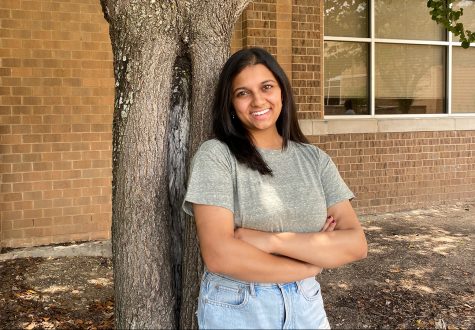
Shreya Jagan is a senior and is entering her fourth year of Wingspan as an Assistant Editor-in-Chief. She has a huge passion for dance and recently completed...
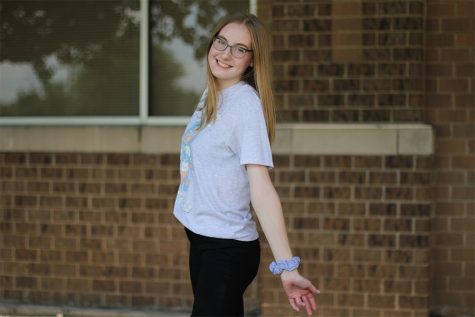
Emily Vetvick is a senior starting her first year writing for Wingspan. You can usually find her eating goldfish or talking about her favorite hockey players...
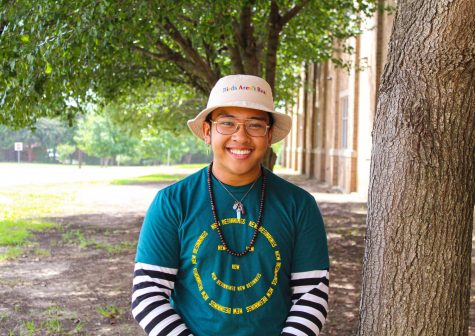
Michael is a senior, and this is his second year joining the Wingspan crew as a senior for the 2020-21 school year. He enjoys his art, photography, others...




